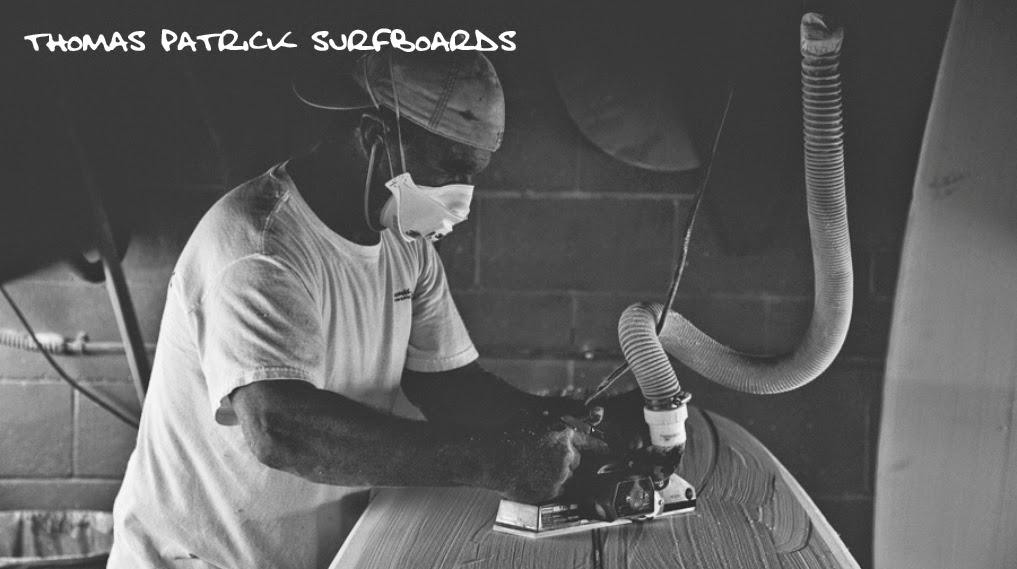As can be seen, the rocker is extremely flat in the last 2/3 of the bottom. This makes the shape paddle fast and glide fast across the wave face. Here's the finished shape...
I use a sloped-deck approach which allows a nice, thin rail for hold on steep faces. There is a concave down the center of the deck to hel keep the rider centered. The thickness along that deck ridge is 2-1/4", while thickness along the stringer is about 1-7/8". Those gooves on the nose are rail-grips. They will be less apparent after glassing. The nose is scooped-out a bit (more noticeable in the photo above). There is a break in the curve or "hip" about 12" up from the tail. This should coincide with the location of the rider's waist while riding, and serves as a pivot point in the outline for turning.
Looking down the bottom from the nose to the tail, you can see the concave that runs out the back 14" or so. The bevel in the tail bottom starts at the hip in the outline and increases the rocker along the rail in this area. This bevel makes the board easier to turn as the board is rolled up on the rail to turn. The bottom is convex in the nose up to the point where the rocker starts to flatten. The bottom then stays flat until the bevel and concave in the tail. Asymmetrical twin fins are placed 4" up from the tail, in the flat area between the bevel and the concave. Fin toe-in favors speed over turning.
| Bottom showing both concave and bevel |
| Right-side tail bevel |
Next, the board goes to Ray for Ice Blue resin tint, bottom and rails, clear deck inlay and yellow pinline.

Masterpiece!
ReplyDelete